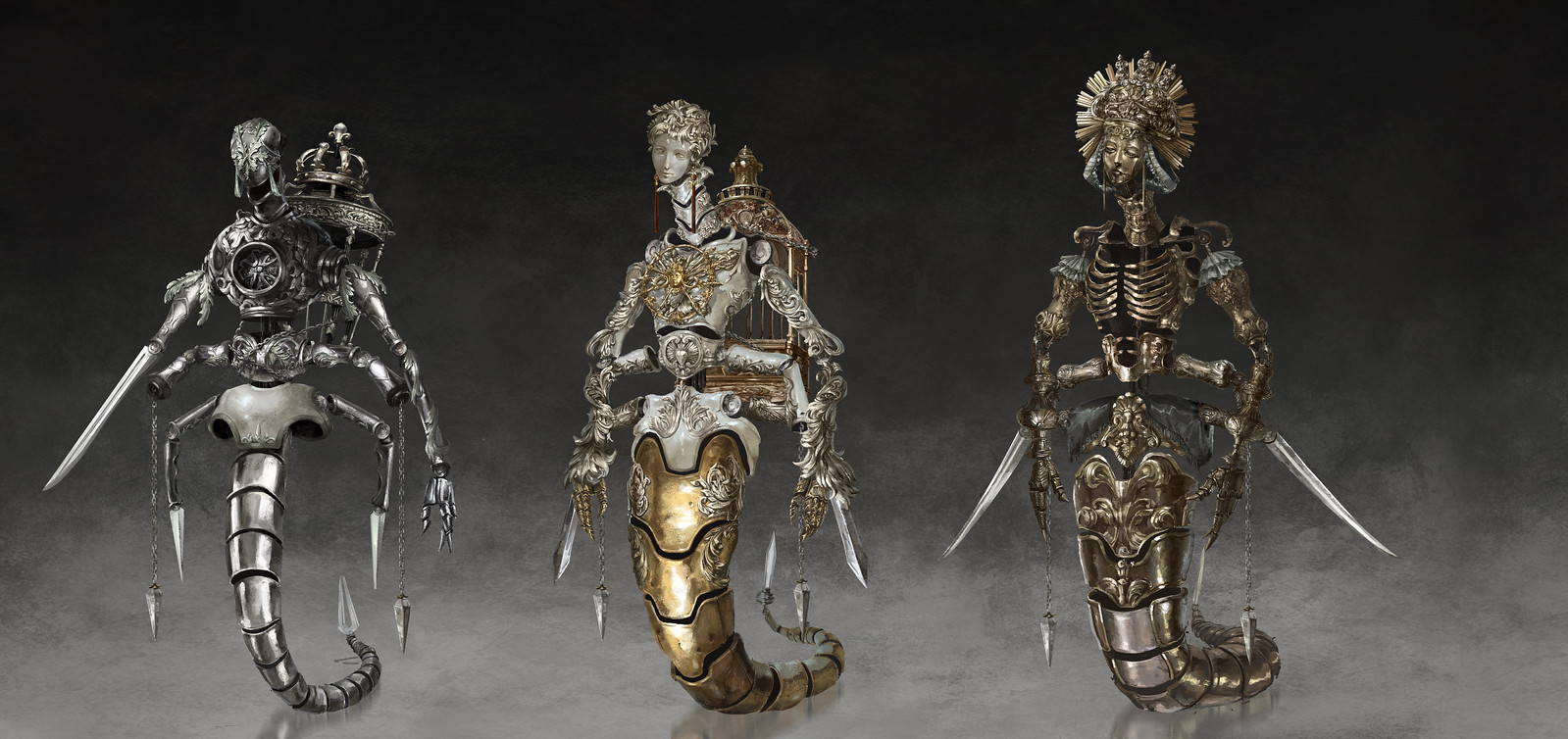Hi everyone, I am Jehanne Rousseau, CEO and lead writer at Spiders. Today, we are very happy to finally unveil the gameplay of SteelRising, and to share with you the creative process that led us to this new project.
In the early production stages on SteelRising, we looked at our previous games, The Technomancer and GreedFall, to help define our vision. Our games have always included a mix of action and role playing elements, most often to fulfil combat and character/story purposes. But what if for this next game we focused and expanded on action in particular? This was our starting point: designing an action-RPG with a strong emphasis on fast-paced combat.
The idea of playing as Aegis, an agile automaton, caught on quickly, and our next step was to define our setting. As a Paris-based studio, we have always been influenced by our European roots, and have always had a taste for the baroque, the strange, the eerie. After a few iterations, the pieces started to come together, and we set SteelRising in an alternate timeline based on the French Revolution of 1789. To tame the flames of revolution igniting Paris, King Louis XVI unleashes a deadly army of clockwork robots on the people. You are Aegis, a mysterious automaton, bodyguard to Queen Marie-Antoinette, and the Revolution’s last hope against a king gone mad.

Aegis was originally made to be a dancer, and wasn’t initially designed for combat. Considering each opponent you face is a literal killing machine, defeating them won’t be easy. You will have to make good use of your inherent grace, think fast, stay on your toes, and strike at the right moment to come out in one piece. You can also adapt Aegis to your own play style thanks to a flexible levelling system, and a wide variety of different weapons, each with their unique strengths and weaknesses.
If you have ever played a Souls-like, SteelRising will feel familiar to you. And this is one of the reasons why we wanted you to play as an automaton: Aegis is much more acrobatic than any human could be. She brings great agility and verticality to any fight. What’s more, throughout your adventure you will unlock various tools, opening new paths to explore as well as new gameplay possibilities during combat.
That’s a wrap for today, and while we still have some work ahead of us, we can’t wait to share more details with you about SteelRising, before it releases on PlayStation 5 in 2022.